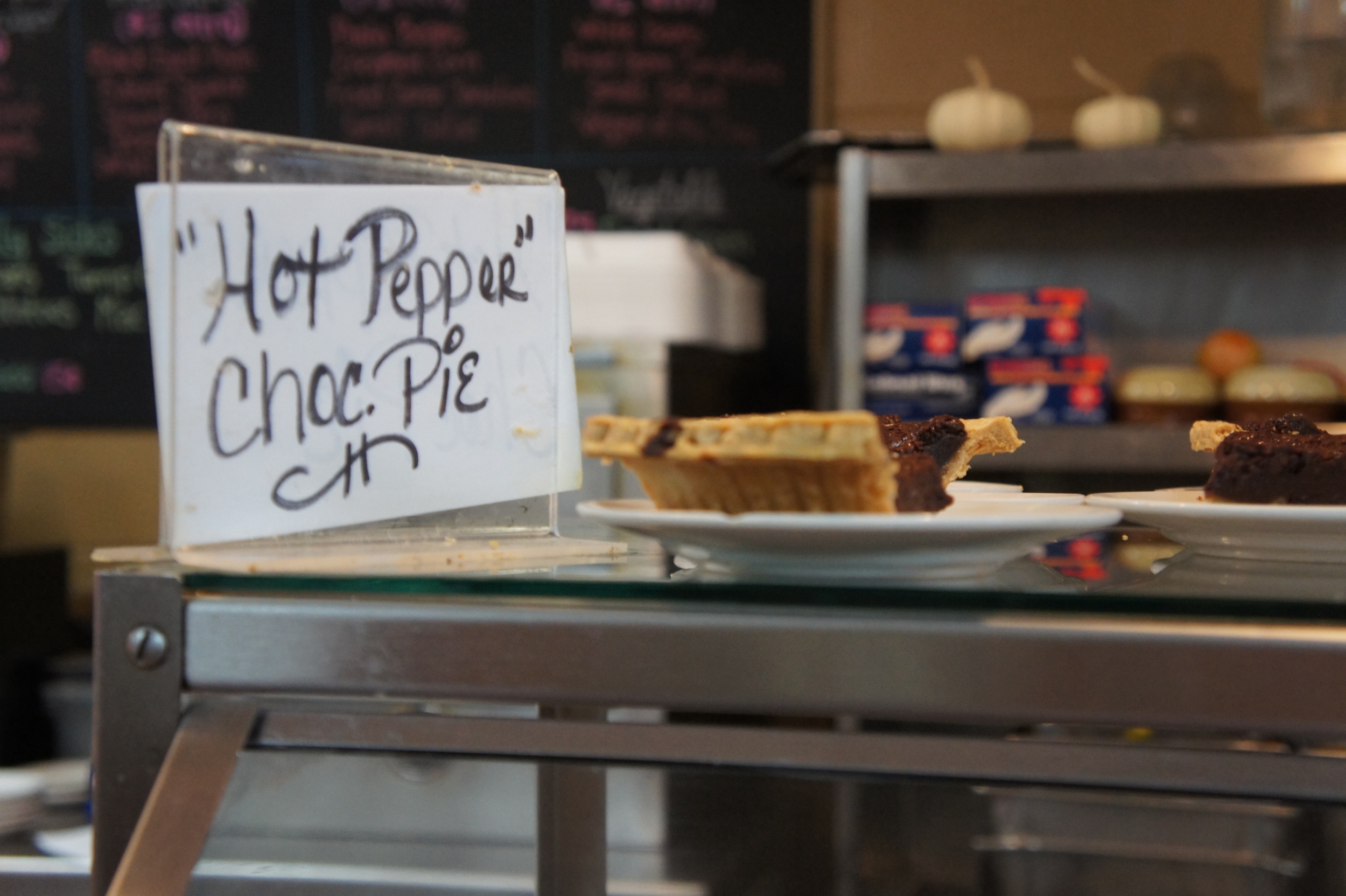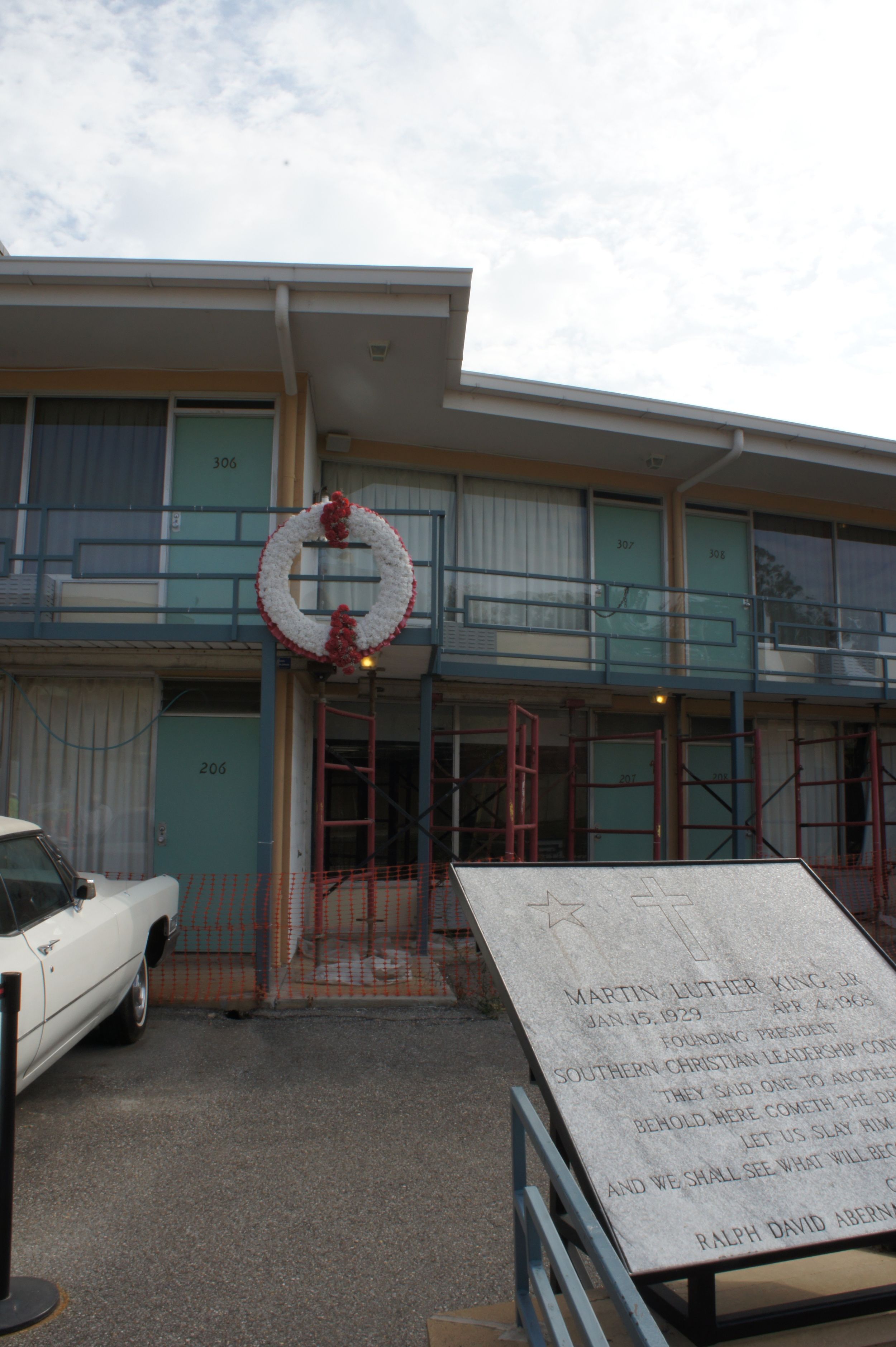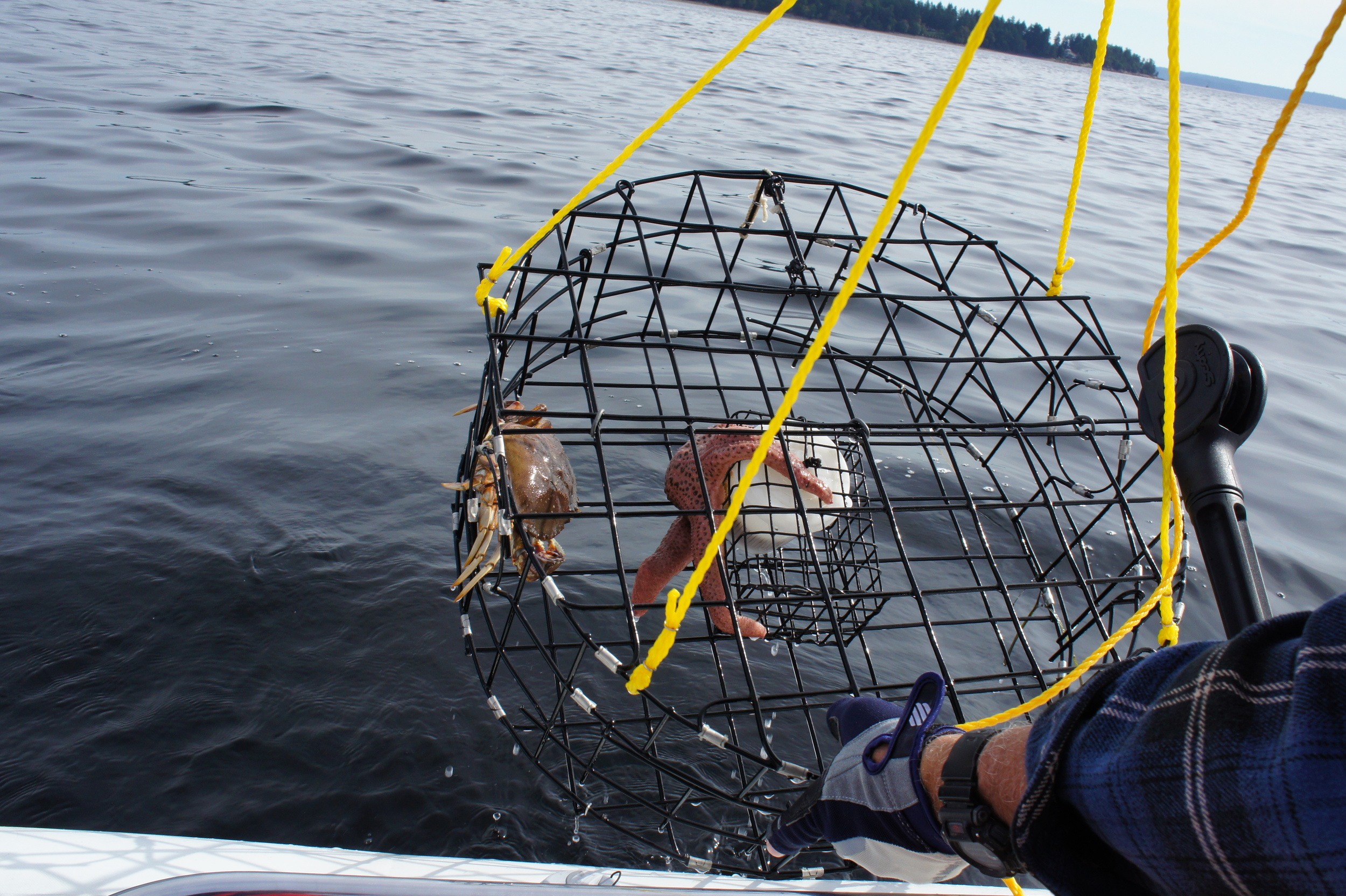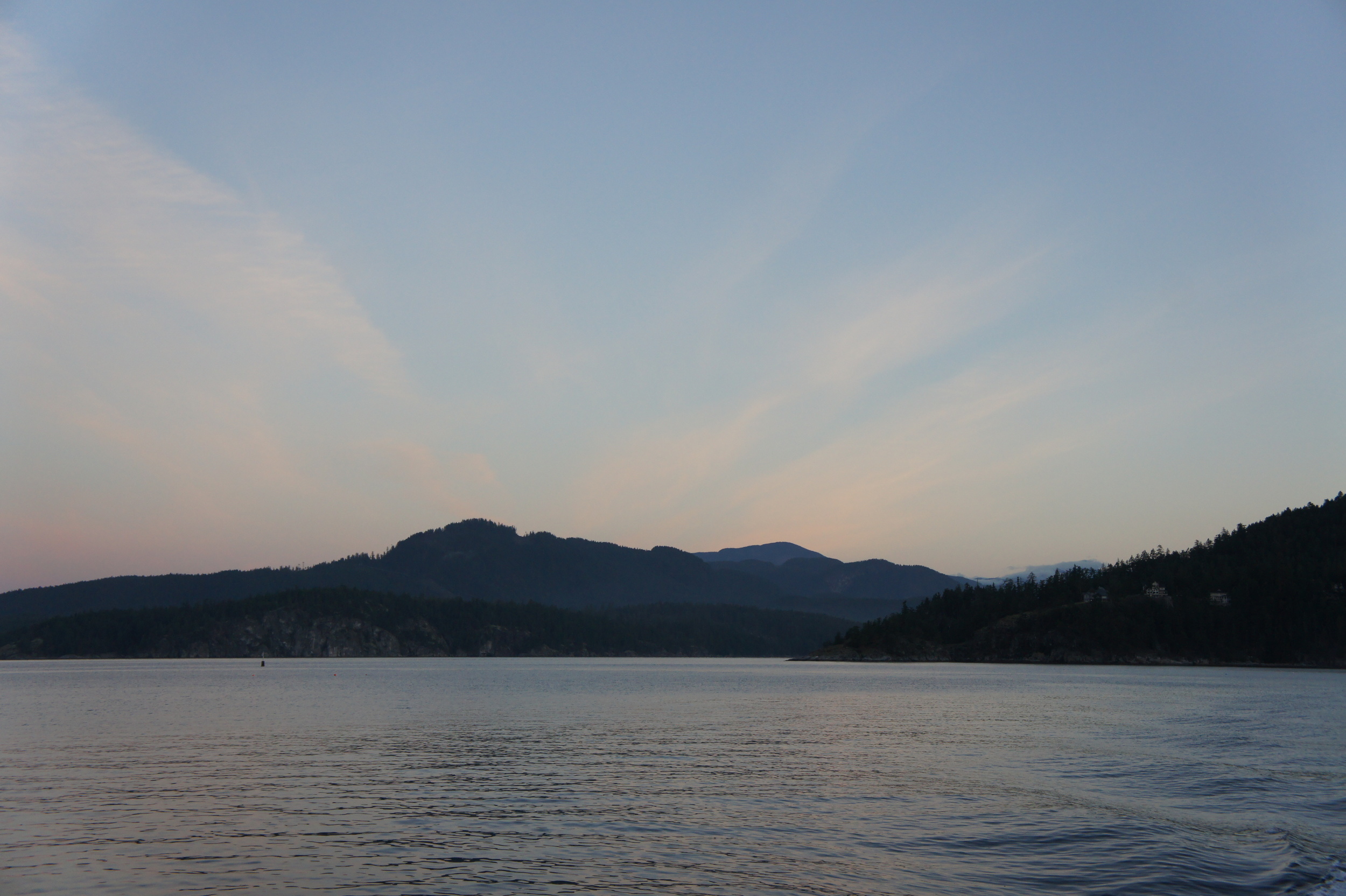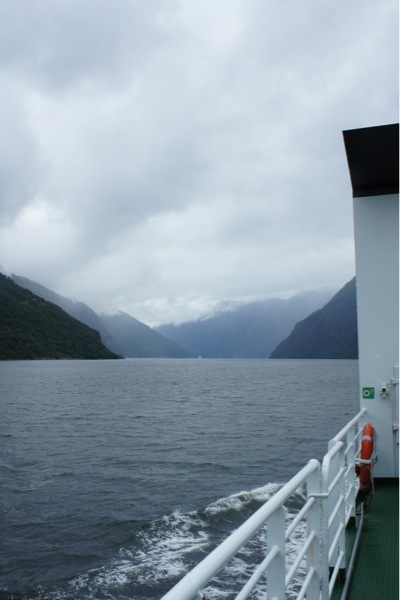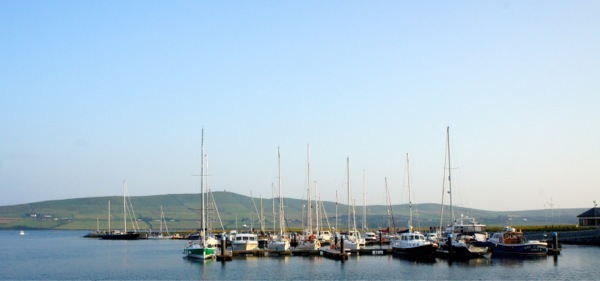Haida Gwaii
Off the coast of British Colombia, right up close to Alaska but still a solid 100 miles off the coast is an comma shaped grouping of islands. For several millennia the only inhabitants were a fearsome nation who were known to canoe across that wide expanse of water to raid the coast.
Their home was a beautiful and temperate expanse of ageless trees, salmon-full rivers, beaches of shellfish and kelp. Their companions were eagles, ravens, bears and the teeming life of the northern rainforest. The Haida's were wealthy enough to have slaves - to be able to feed, cloth, protect not only themselves but the young men and women they would bring back from the mainland.
First contact with what too predictably would be the destructive forces of Western European expansion happened quietly at first. A Spanish boat may have been the first contact and it wasn't till several decades later that real established contact happened. Traders and fisherman initially worked with the Haida's. Even to violent and well armed Europeans the Haida's were a fierce opponent. It was really until a catastrophic epedemic of smallpox decimated the nation in the early 18 hundreds that the Haida's were fully subjugated. From a population of 10,000 the Haida's were reduced to 600. Imagine a town, a small city really loosing over 90% of its inhabitants.
What the Haida lost though was more rare and valuable than just their lives, their culture and their hold on the island was pushed to the margins, waiting to die out. For a long time, the British and then the Canadians, acted out brutal and dehumanizing policies that banned the Haida's and other First Nations from speaking their language, practicing their culture. The Haida's went underground with their potlatches. Potlatches had traditionally run for days or weeks, members of the nation would come from all over to demonstrate their wealth and connections through a complex system of giving and receiving. Resembling more a political convention than a simple get together. Potlatches became church get together or country fairs. They hid under the semblance of allocated civilization and managed to preserve through more than a 100 years the essentials of being Haida.
Today the Haida's are reclaiming their home. Starting in 1985 with a stand against a plan to log parts of their island the Haida's have claimed the Queen Charlotte Islands back, starting with the name. It was their home and it is now again as Haida Gwaii - the people's land.
To spend even a few days there is to get a glimpse at a beautiful land on the edge of the world. Meet people who are friendly, open, generous and proud of their home. I have no way of knowing if the Haida's and other people of Haida Gwaii were always so friendly but I can't help wondering if claiming back your home and giving pride of place to your history and culture brings about this openness and friendliness.
Today the island's population stands at just under 5000. The main attraction is the Gwaii Haanas national park that takes up most of the large southern island of Moresby. Gwaii Haanas is only accessible by boat or by float plane. It is the first and I think still the only natural preserve that goes from the top of its tallest mountain to the bottom of the ocean floor. The Canadian government recognizing finally what the Haida's always knew, that land and water are intrinsically linked.
I didn't get a chance to visit Gwaii Hanas. That will have to be for another trip, but staying on the northern island and in Sandspit, the biggest town in the southern island, was a treat in and of itself.
We arrived mid day at Sandspit Marina via boat. I was spending a week on my father's boat. This was just a short stop over in a two month long trip up and down the coast to Alaska and back to Seattle. After a few hours of clean up and set up - getting power, refilling on water, washing down the decks to rinse off the salt, we rented a car to explore a little. On our way off the dock I chatted up a couple fisherman prepping their haul of Dungeness crabs.
They'd come back from a "regular day" of fishing with several large ling cods, rock fish and salmon and 18 crabs. None of these catches are small fry. The king cod was easily 10 to 12 lbs, the rock fish close to 10 and Dungeness crabs are about the size of a grown man's head.
A few minutes later they came over to us and handed over 3 of the crabs as a welcome to Haida Gwaii type gift. Dinner from strangers never tasted so good.
This was the kick off to 4 days on the islands. We spent most of it exploring the coast line, the northern island, hiking in the temperate rainforest, and fishing for salmon. Running on well paved, un-traffic-ed roads from the marina to what feels like a beach at the end of the world is a nice reminder that life isn't all concrete and glass (well, hello New York).
When you are that far from anything too man made, the air is unbelievably clear and sweet-smelling. Haida Gwaii must be a tough place in the dead of winter. They don't get a lot of snow, its too temperate, but the light must go down to just a few hours a day, and the seas get rough. The only outside links are the two small airports and the huge ferry that brings cars, food and fuel to the islands.
That first day, we went for a short walk down the a moss covered path through the old forest to a rocky outcrop. Stepping out into streaming sun after the grey and drizzle of the road, with a brilliant sun high in the sky at 8pm at night. The outcrop looked out over the beginning of the narrows, the thin body of water between Moresby (south) and Graham (north) islands. In the distance we could just see town of Skidegate but the view was of shimmering calm waters and the mountains beyond.
A few links:














